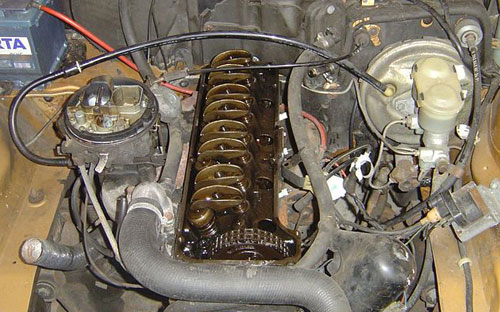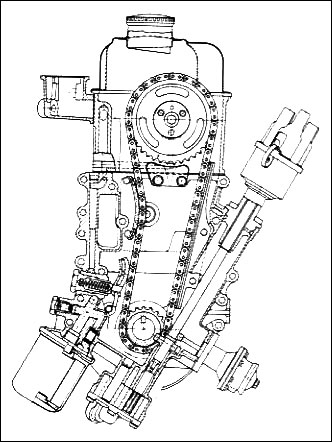Technical Curiosities:
Opel’s Cam-In-Head Engine
As with single-point fuel injection, the design of Opel’s cam-in-head (CIH) engine was an attempt to bridge the old and the new, to incorporate some up-and-coming features while using as many existing parts as possible. It’s a transitional form, as it were, between ’60s and ’80s tech.
Fitted to the 1.9l, 4-cylinder blocks of the engines of Opel’s GT and Manta coupes, among others, the CIH head is a hybrid of overhead-cam and pushrod technology. The camshaft is located in the cylinder head, as in an OHC engine, but the valvetrain still uses a pushrod setup’s rocker arms and lifters. It’s as if someone had taken a pushrod design and simply moved the cam upward until the rods themselves were rendered superfluous.
Advantages? The CIH engine was obviously an easier sell to Opel’s corporate overlords at GM, reusing as it did much existing pushrod valve gear while still offering some of the benefits of a true OHC engine. The valvetrain is more compact than in a pushrod engine and its associated inertia is much less, allowing a redline north of 10,000 rpm for race-prepped CIH engines with roller rockers and suitable springs and cam profile. Hydraulic lifters can be easily used, and in case they aren’t, valve adjustments are much more straightforward than they would be if the cam operated directly on the lifters. And significantly for the Opel GT, with its low-profile hood, the location of the camshaft farther down meant the engine’s overall height is lower than if the camshaft were truly overhead.
Downsides of the CIH engine mainly revolve around the standard limitations of a non-crossflow, 2-valve design, including relatively poor airflow and necessary compromises in combustion chamber design. Also, the cylinder head casting is relatively complex, which introduces a risk of cracking, and the head was only ever made out of cast iron, incurring a weight penalty over an aluminum head. And whatever the valvetrain’s inertial advantages over a pushrod design, there still exists considerably more valve gear than a more direct OHC layout.
Opel’s cam-in-head engine was a stepping stone, but a unique and noteworthy one.
Image credits: curbsideclassic.com
Editor’s note: This post is part of an ongoing series spotlighting obscure automotive engineering solutions. Read the other installments here:

























